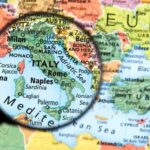Italy, known for its rich history, stunning landscapes, and delicious cuisine, has always been a popular tourist destination. However, in the wake of the COVID-19 pandemic, travel restrictions have become a crucial consideration for those planning a trip to this beautiful country. Understanding the current travel scenario in Italy is vital to ensure a smooth and hassle-free experience.
As the situation evolves rapidly, staying informed about the latest updates regarding travel restrictions in Italy is essential. Travelers need to be aware of any changes or new guidelines imposed by the Italian government to navigate their way through these restrictions effectively.
Furthermore, understanding the required paperwork and entry requirements is crucial when planning a trip to Italy. Essential travel documentation plays a significant role in gaining entry into the country and must be carefully reviewed and prepared before departure.
In this article, we will delve into all aspects related to travel restrictions for Italy. From highlighting the most recent updates on travel restrictions and exploring limitations faced by tourists when entering Italy, to discussing mandatory self-isolation measures and testing requirements for COVID-19, we aim to provide comprehensive information that will assist travelers in planning their trip efficiently and safely.
Remember, it’s important to conduct thorough research and verify the latest information before embarking on your journey to ensure accuracy and compliance with regulations.
Latest Updates
Italy has implemented various travel restrictions in response to the COVID-19 pandemic, and it is crucial for travelers to stay updated on the latest information before planning a trip. This section will highlight the most recent travel restrictions in Italy, providing valuable insights for anyone considering traveling to this beautiful country.
As of (date), Italy has categorized countries into different zones based on their risk level: low-risk, medium-risk, high-risk, and very high-risk. The categorization is determined by factors such as the number of COVID-19 cases and variants present in each country. Travelers coming from low-risk countries are subject to less stringent requirements compared to those from high-risk or very high-risk ones.
For travelers arriving from low-risk countries, there are currently no quarantine requirements upon entry into Italy. However, they must still provide a negative COVID-19 test result taken within 72 hours before arrival or undergo testing upon arrival at their own expense.
Travelers arriving from medium-risk, high-risk, or very high-risk countries will need to follow specific protocols. This includes providing a negative COVID-19 test taken within 48 hours before entering Italy and self-isolating for five days upon arrival. After five days, another COVID-19 test is required to end the isolation period.
It’s important to note that these regulations are subject to change based on the evolving situation of the pandemic. Travelers should regularly check with official sources such as the Italian Ministry of Foreign Affairs or their local embassy for updates on travel restrictions before planning their trip.
| Restriction Category | Requirements |
|---|---|
| Low-Risk Countries | No quarantine required; Negative COVID-19 test result within 72 hours before arrival or testing upon arrival |
| Medium-Risk, High-Risk, or Very High-Risk Countries | Negative COVID-19 test result within 48 hours before arrival; 5-day self-isolation; COVID-19 test after 5 days to end isolation |
It’s worth mentioning that these guidelines apply to travelers by air, land, and sea. Additionally, Italy has also imposed restrictions on non-essential travel within its regions depending on their risk level. It is advisable for travelers to check the specific restrictions governing the region they plan to visit.
Keeping up-to-date with the latest travel restrictions is essential for a smooth and hassle-free trip to Italy. By adhering to the guidelines set by Italian authorities, travelers can ensure their safety as well as the safety of others during their visit.
Essential Travel Documentation
Traveling to Italy requires travelers to have certain essential travel documentation and meet specific entry requirements. This section will provide an overview of the paperwork and documents that are necessary for entry into Italy.
Passport and Visa Requirements
One of the primary documents required for traveling to Italy is a valid passport. Make sure your passport is valid for at least six months beyond your planned departure date from Italy.
It’s also essential to check if you need a visa to enter the country. Citizens from many countries, including the United States, Canada, Australia, and most European nations, can enter Italy for tourism purposes without a visa and stay up to 90 days within a 180-day period.
COVID-19 Travel Documents
In response to the COVID-19 pandemic, additional documentation may be required for travel to Italy. Currently, travelers are required to complete a digital Passenger Locator Form (dPLF) before their arrival in Italy. This form provides contact information and details about your trip. You must present the completed dPLF form upon request.
Additionally, depending on your country of origin or transit history, you may need to provide proof of a negative COVID-19 test result taken within a specified timeframe before your arrival in Italy. The type of test accepted and timeframe requirements can vary, so it’s important to check with the Italian embassy or consulate in your home country or residence for the latest information.
Medical Insurance Coverage
While not mandatory for entry into Italy, it is highly recommended that travelers purchase comprehensive travel medical insurance coverage. This insurance should include coverage specifically for COVID-19-related expenses such as testing and treatment if necessary during your trip. It’s crucial to carefully review the terms and conditions of any insurance policy you consider purchasing to ensure it meets your needs.
Understanding and fulfilling these essential travel documentation requirements will help ensure a smooth entry into Italy. However, it’s important to regularly check for updates and changes in travel regulations by consulting official sources such as the Italian government’s official websites or contacting the nearest Italian embassy or consulate.
Travel Bans and Restrictions
Italy has implemented various travel bans and restrictions in an effort to control the spread of COVID-19. It is important for tourists to be aware of these limitations before planning a trip to Italy. This section will explore the current travel bans and restrictions that are in place for tourists entering Italy.
- Entry Restrictions: Currently, entry to Italy is restricted for non-essential purposes. Only essential travel is permitted, such as work, health reasons, or emergencies. Tourists are not considered essential travelers and may not be granted entry. It is crucial for travelers to check the specific requirements and guidelines enforced by their home countries and Italy before planning any trips.
- European Union Travel: Citizens of EU member states are allowed to enter Italy for any reason (including tourism) as long as they comply with certain requirements such as providing proof of vaccination or a negative COVID-19 test result. However, it’s important to note that individual EU member states may have their own additional entry requirements or restrictions.
- Non-EU Travel: Non-EU citizens face more stringent travel restrictions when entering Italy. There are specific categories of travelers who are exempt from the ban, such as individuals traveling for proven work needs, students with valid permits, and immediate family members of Italian citizens or residents. In most cases, non-EU citizens must provide valid reasons for entry and follow strict protocols like quarantine upon arrival.
It is crucial for travelers planning a trip to Italy to stay updated on the latest information regarding travel bans and restrictions. The specific requirements can differ depending on various factors such as nationality, vaccination status, and purpose of travel. Therefore, it’s advisable to consult official government sources or contact relevant authorities like embassies or consulates before making any travel arrangements.
Quarantine Protocols
Self-Isolation Upon Arrival
Italy currently requires all travelers entering the country to undergo a period of self-isolation upon arrival. This means that upon reaching Italy, individuals must quarantine themselves for a specific duration to minimize the risk of spreading COVID-19. The exact length of the quarantine period may vary based on the traveler’s country of origin and other factors.
During this self-isolation period, travelers are expected to stay at their declared address and limit their interactions with others as much as possible. It is crucial to adhere strictly to these protocols to protect oneself and others from potential infection. Non-compliance may result in penalties or legal consequences.
Exceptions to Quarantine Requirements
Although mandatory quarantine applies to most travelers entering Italy, there are certain exceptions. Some individuals may be exempted from the self-isolation requirements if they fall under specific categories. These exceptions typically include essential workers, such as healthcare professionals or individuals involved in transportation services, who have urgent reasons for travel.
It’s important for travelers to familiarize themselves with these exceptions before planning their trip and consult with relevant authorities or embassies to determine their eligibility. Documentation and proof may be required to demonstrate exemption status.
Mandatory Testing during Self-Isolation
In addition to self-isolation, many travelers visiting Italy are also obligated to undergo testing for COVID-19 during their quarantine period. This generally involves taking a PCR test within a specified time frame after arrival. The details regarding testing requirements may vary depending on factors like country of origin, duration of stay, and vaccination status.
Travelers should carefully follow the instructions provided by Italian health authorities concerning mandatory testing protocols. Failure to comply with these requirements may lead to penalties or prolonged isolation periods.
By understanding and diligently adhering to the quarantine protocols implemented by Italy, travelers can contribute towards keeping themselves and others safe while enjoying their visit to this beautiful country. It is crucial to stay updated on the latest guidelines and regulations to ensure a smooth travel experience and prevent any issues during entry or stay in Italy.
COVID-19 Testing
As part of the measures taken to control the spread of COVID-19, Italy has implemented specific testing requirements for travelers entering the country. It is important for anyone planning a trip to Italy to be aware of these testing requirements and ensure compliance in order to avoid any inconvenience or potential complications during their stay.
For entry into Italy, all travelers must present proof of a negative COVID-19 test result. The test must have been conducted no earlier than 48 hours before arrival. It is crucial to note that only certain types of tests are accepted, namely molecular PCR tests or antigen tests authorized by health authorities. Rapid antigen tests may also be accepted if they meet specific criteria established by the Italian government.
Upon arrival in Italy, some travelers may be subjected to additional testing based on certain factors such as their country of departure or any symptoms they may be exhibiting. Travelers arriving from countries classified as high-risk areas are subject to mandatory testing upon arrival at the airport. These tests are usually conducted using molecular PCR methods.
During their stay in Italy, visitors may also be required to undergo regular COVID-19 testing depending on the duration and purpose of their visit. For example, individuals staying in Italy for more than 120 hours are obliged to take another COVID-19 test at the end of this period. Certain exceptions apply to fully vaccinated individuals who may not need to undergo additional testing during their stay.
To summarize:
- All travelers entering Italy must present a negative COVID-19 test result.
- The test must have been conducted no earlier than 48 hours before arrival.
- Molecular PCR tests or authorized antigen tests are accepted.
- Additional testing may be required upon arrival for travelers from high-risk areas.
- Regular testing may be necessary depending on the duration and purpose of stay.
- Exceptions may apply for fully vaccinated individuals.
Taking into account these testing requirements and ensuring compliance is essential to ensure a smooth and hassle-free travel experience in Italy. It is advisable to stay informed about any updates or changes to the testing protocols by checking official sources such as the Italian Ministry of Health or consulting with the nearest Italian embassy or consulate in your home country.
By being well-prepared and adhering to the necessary testing requirements, travelers can contribute to maintaining a safe travel environment within Italy.
Exceptions and Exemptions
Italy has implemented strict travel restrictions to limit the spread of COVID-19, but there are certain exceptions and exemptions where these restrictions do not apply. It is important to understand these cases to determine who can travel to Italy without facing the limitations imposed by the travel bans and restrictions.
One of the main exceptions is for Italian citizens and residents. Italian nationals and those holding a valid residence permit in Italy are allowed to enter the country regardless of their country of origin. However, they might still be subject to additional testing or quarantine requirements upon arrival.
Another exception applies to travelers with proven work-related reasons. This includes individuals entering Italy for business purposes, such as employees traveling for essential work or those attending business meetings or conferences. Proof of the necessity of travel, such as an invitation letter from an Italian company or organization, may be required.
Furthermore, certain categories of travelers are exempted from some or all travel restrictions. These include healthcare workers, diplomats and members of international organizations on official missions, students attending education institutions in Italy, and individuals who need emergency medical treatment.
It is worth noting that exemptions may vary depending on the evolving situation and government policies. Therefore, it is advisable for travelers falling under potential exceptions to carefully check the latest updates from reliable sources such as official government websites or consult with relevant authorities before making any travel arrangements.
| Exceptions | Applicable Cases |
|---|---|
| Italian Citizens and Residents | Italian nationals and holders of valid residence permits in Italy. |
| Workers with Proven Work-related Reasons | Individuals traveling for essential work or attending business meetings/conferences. |
| Healthcare Workers | Medical professionals entering Italy for work purposes. |
| Diplomats and Members of International Organizations | Individuals on official missions representing their countries or international organizations. |
| Students | Students enrolled in education institutions in Italy. |
| Emergency Medical Cases | Individuals requiring emergency medical treatment in Italy. |
Travel Tips
Traveling to a new country can be an exciting experience, but it’s important to be well-prepared to ensure a smooth and hassle-free trip. Here are some valuable travel tips that will help you make the most of your visit to Italy while navigating the current travel restrictions.
Firstly, it’s crucial to stay updated on the latest travel advisories and restrictions imposed by both your home country and Italy. The situation is constantly evolving, and regulations may change at any time. Check with official government websites and consulates for accurate and up-to-date information before making any travel plans.
When planning your trip, consider purchasing travel insurance that covers COVID-19-related expenses such as medical treatment or trip cancellations due to unforeseen circumstances. This will provide you with peace of mind in case anything unexpected happens during your journey.
Before departing for Italy, make sure to familiarize yourself with the specific entry requirements and necessary paperwork. This may include filling out health declaration forms, providing proof of a negative COVID-19 test result taken within a specified timeframe before departure, or obtaining a visa or permit if required. Ensure that you have all the required documents in order to avoid any complications upon arrival.
It’s also advisable to research and understand the local health protocols and guidelines implemented in Italy. This includes knowing when and where face masks are mandatory, practicing social distancing, and following hygiene practices such as frequent handwashing. Familiarize yourself with public transportation guidelines, capacity limitations for tourist attractions, and restaurant regulations to ensure a safe experience throughout your trip.
Additionally, consider using contactless payment methods such as credit cards or mobile payment apps instead of cash whenever possible. This minimizes physical contact and reduces the risk of spreading the virus.
By keeping these travel tips in mind and staying informed about the latest updates regarding travel restrictions in Italy, you can enjoy a seamless journey while prioritizing your safety and well-being. Remember that responsible traveling is key during this time, and by following the necessary precautions, you can make the most of your trip and create lasting memories in beautiful Italy.
Future Outlook
As the world continues to navigate through the COVID-19 pandemic, travelers eagerly await potential changes and easing of travel restrictions in Italy. While the situation remains fluid, there are a few factors to consider when looking at the future outlook for travel in this beautiful country.
One of the key indicators for potential changes in travel restrictions is the vaccination progress both globally and within Italy. As more individuals receive their vaccinations, there is hope that countries will begin to ease restrictions, allowing travelers to visit once again. It is important to stay updated on the vaccination rollout plan in Italy and any announcements made by Italian authorities regarding their impact on travel restrictions.
Another factor influencing future travel restrictions are the infection rates and trends within Italy itself. If infection rates continue to decrease or stabilize, authorities may consider easing restrictions for travelers. Monitoring these trends through reliable sources such as government health departments and official tourism websites can help provide insights into any upcoming changes.
Additionally, international collaborations among countries and organizations play a significant role in shaping future travel regulations. Initiatives such as vaccine passports or mutually recognized testing protocols can facilitate safe travel between nations. Stay informed about any developments regarding international agreements that could impact travel restrictions in Italy.
It is crucial to note that while potential changes may be on the horizon, it is essential to prioritize safety during travel planning. Adhering to guidelines from health authorities, practicing proper hygiene measures, and staying informed about local regulations will remain paramount even if restrictions begin to ease. As the future remains uncertain, flexible booking options and comprehensive travel insurance can help mitigate unforeseen circumstances while planning trips.
Ultimately, while we hope for a future where travel can resume without extensive restrictions, it is vital to approach the outlook with patience and preparedness. Staying up-to-date with current information from reliable sources will allow travelers to make informed decisions and responsibly plan their trips to Italy when it becomes feasible and safe to do so.
Conclusion
In conclusion, it is important to stay updated on the latest travel restrictions in Italy before planning any trips. The COVID-19 pandemic has resulted in various limitations and requirements for tourists entering the country. Understanding the necessary paperwork and entry requirements, as well as the mandatory self-isolation measures and testing protocols, is crucial for a smooth travel experience.
While Italy has implemented travel bans and restrictions, there are exceptions and exemptions in place for certain cases. It is advisable to thoroughly research these exceptions to see if they apply to your specific situation. However, it is important to note that even with exceptions, it is essential to follow all necessary health and safety guidelines to protect yourself and others from COVID-19.
Looking ahead, it is likely that travel restrictions will continue to evolve as the situation with the pandemic changes. Potential changes and easing of restrictions may occur based on vaccination rates, infection rates, and government policies. Therefore, it is recommended to regularly check for updates from reliable sources before making any firm travel plans.

I’m a passionate traveler, writer, and Italophile. My fascination with Italy’s history, art, and culture has led me on countless adventures across the Italian landscape. Through “I Live Italy,” I share my love for this extraordinary country and aims to inspire others to explore its boundless beauty.





